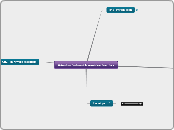Networking Fundamentals Knowledage Base- Noor
ch1- introduction
Basic functions
Input
Processing
Output
Storage components
Short-term/ Ram
Long-term/ LIke DVE...
Personal Computer components
Motherboard
Hard drive
RAM
BIOS/ CMOS
Multitasking
Steps of Network Commuinction
Layer of Network communication
User applicaton
network software
network protocol
network interface
Types of networks
LAN
internetworks
LAN+ raouter+LAN
MAN
WAN
Packet/ farmes
Client/ server
Client/ server operating system
Client/Server computer
Client. server/ sofware
jpg
Exam1 part B
CH2 - hardware essentials
Multirepeater
called hub
four ports
first recieve signals
then Clean signals
then regenrates signal
then transmits signals
bandwidth sharing
half duplex only
traditional repeater
has 2 ports
study cases 1,2,3
Classroom2
Homework 3
switches
dedicated bandwidth
first recieve frame
then read the destenation
then look up the destenation
then forward the frame to it
then update the source with the new address
half duplex or full duplex
Access point
use for wireless communications
similar to hubs
NIC
provide connection
recieve signals and frames
recieve packets
convert frames into signals
router
enable LANs communicate b/t 1 another
hub and switch connect CPU to LAN/ raouter connect LANs
